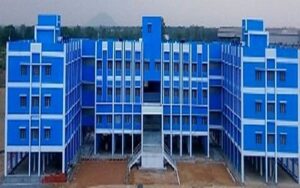Computer
Generations of Computer
|
1st Generation
|
2nd Generation
|
3rd Generation
|
4th Generation
|
5th Generation
|
|
|
Time Period
|
1940’s -50’s
|
1950’s -60’s
|
1960’s -70’s
|
1970’s to present
|
Present
|
|
Based on
|
Vacuum tubes
|
Transistors
|
Integrated circuits
|
LSI and VLSI microprocessor
|
ULSI, Microprocessor, AI
|
|
Language
|
Machine language
|
Assembly language
|
BASIC, PASCAL
|
C, C++
|
SQL
|
|
Memory
|
4000 bits
|
32000 bits
|
128000 bits
|
100 million bits
|
Unlimited
|
|
Size
|
Very large
|
Relatively smaller
|
Relatively smaller
|
Micro Computer
|
Tiny computer
|
|
Example
|
ENIAC, VNIVAC
|
IBM 400, IBM 1600
|
VNIVAC 9000
|
Personal Computer
|
Laptop, AI based gadgets
|
Types of Computer
Based on Operation
|
Analog Computer
|
Digital Computer
|
Hybrid Computer
|
Based on Size
|
Super computer
|
Mainframe computer
|
Mini computer
|
Microcomputer
|
Components of Computer
-
Input Unit:
-
Keyboard:
-
Keyboard of Earlier PC had 84 Keys, Modern Keyboards have 101 -104 keys
-
Different Keyboard layouts are: QWERTY, QWERTZ, AZERTY, DVORAK
-
-
Mouse
-
Trackball
-
Digitizer or Graphical Tablet
-
Touchpad
-
Touchscreen
-
Joystick
-
Light Pen
-
Scanner
-
Barcode Reader
-
Webcam
-
Microphone
-
-
Output Devices
-
Monitor
-
Projectors
-
Printer
-
Speaker and Headphone
-
-
Memory:
-
RAM:
-
Random Access Memory
-
Volatile Memory, if computer is turned off, the memory will be lost.
-
Volatile Memory needs steady flow of electricity to store data.
-
Two types of RAM are:
-
SRAM: Static Random Access Memory
-
DRAM: Dynamic Random Access Memory
-
-
-
ROM
-
Read Only Memory
-
Primary and initial memory used to read data. It can not be removed. Used to operate the computer.
-
Types:
-
PROM
-
EROM
-
EEPROM
-
-
-
Catche Memory:
-
A small size of memory embaded to the RAM or Processor. It is the fastest memory.
-
-
Memory Unit:
-
1 Nibble = 4 bits
-
1 Byte = 8 bits
-
1 kilobyte = 1024 bytes
-
1 Megabyte = 1024 bytes
-
1 gigabyte = 1024 Megabyte
-
1 Terabyte
-
1 petabyte
-
1 exabyte
-
1 zettabyte
-
1 yottabyte
-
1 Brontobyte
-
1 Geobyte
-
-
-
Software
-
System Software
-
Microsoft window, Linux, mac, Android
-
Application software
-
-
-
Programming language
-
BASIC, FORTRAN, PASCAL, C, C++
-
Low Level Language
-
Machine Language:
-
It has only two digits, 0 = OFF and 1= ON
-
Considered as the first generation language.
-
-
Assembly language.
-
-
High Level Language
-
Example: COBOL= Common Business Oriented Language. BASIC = Beginners All Purpose Symbolic Instruction Code. FORTRAN = Formula Translation. PASCAL, PYTHON, JAVA etc.
-
-
-
File formats:
-
Microsoft Word Document: .docx or .doc
-
microsoft Excel Work book: .xlsx or xls
-
Microsoft powerpoint: .pptx or ppt
-
Images: .jpeg or .jpg
-
Portable document: .pdf
-
Adobe photoshop file: .psd
-

